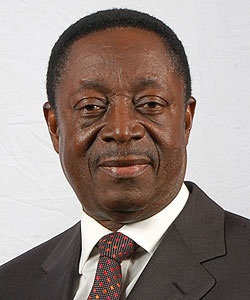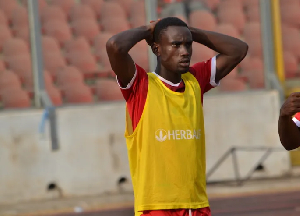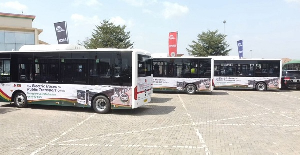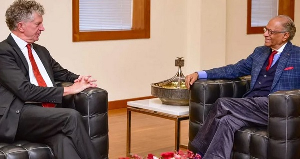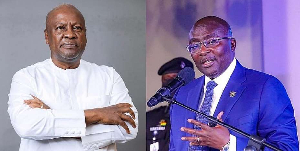Accra, June 20, GNA - Dr Kwabena Duffuor, Minister of Finance and Economic Planning, on Monday said Ghana had made significant strides towards reducing poverty over the last two decade from 51.7 per cent in 1992 to 28.5 per cent in 2006.
He said the trend was similar in the case of extreme poverty, and with such a pace, Ghana had been tipped to achieve target 1 (One) of Goal 1 (One) of the Millennium Development Goals (MDGs) ahead of schedule.
Dr Duffuor announced this in a speech read on his behalf by Dr Alhassan Iddrisu, Director of Real Sector Division, Ministry of Finance and Economic Planning (MOFEP), at a Development Policy Dialogue, organised by the World Bank (Ghana Office) in Accra.
The event on the theme: 93Reaching the poor in Ghana trends, instruments and way forward" is to promote vibrant discourse on development policy choices for the country.
The day's meeting is being attended by representatives of government institutions, leading Ghanaian think-tanks and institutions, Civil Society Organisations and non-governmental organisations.
Dr Duffuor said social protection programmes such as the livelihood Empowerment Against Poverty (LEAP), National Health Insurance Scheme (NHIS), School Feeding Programme, free exercise books and school uniform programmes had significantly contributed to reduce poverty in the country.
He said even though poverty had reduced tremendously there remained pockets of deep poverty especially in the northern savannah area resulting in a wide poverty gap between the north and south of the country.
Dr Duffuor said official statistics showed that between 1992 and 2006 the number of the poor declined by 2.5 million in the South and increased by 0.9 million in the North.
He said poverty in the North had led to chronic food insecurity resulting in vulnerable livelihood of the people.
Dr Duffuor said children in these communities were more prone to underweight, malnutrition and stunted growth and had limited access to basic social services such as safe water, accessible roads, electricity and telephone services.
He gave assurance of government's commitment towards achieving a balanced economic, social development and growth across the country.
"A recent notable intervention to bridge the north-south development gap is the Savanna Accelerated Development Authority (SADA) designed to attract investment to growth corridors in the northern ecological zone whilst providing employment and income generating opportunities for the people,' he added.
Mr Ishac Diwan, Country Director, World Bank, whose speech was read by Mr Waqar Haider, a staff of the World Bank (Ghana Office) in Accra, commended Ghana's rapid economic development and reducing poverty.
However, he expressed concern about the historical north-south divide in terms of the people's standard of living.
Mr Diwan said while rural development and urbanisation had led to significant poverty reduction in the south similar dynamics had been largely absent from Northern Ghana.
He said majority of Ghana's poor lived in Northern Ghana, where the poor were also poorer.
Mr Diwan explained that participatory and quantitative assessments described a situation where the poor in Northern Ghana were predominantly rainfall-dependent farmers.
He said these farmers were highly vulnerable to shocks given the limited diversification of the sources of income.
Mr Diwan called for greater interventions by government beyond spatially blind policies but well targeted within Northern Ghana.
He said people could live well from agriculture in the North if the problem of low productivity was addressed by a more proactive and spatial approach to addressing infrastructure gaps, technology and business climate constraints.
Mr Diwan said greater human development and social protection in the North would increase the potential for local development while improving the quality of migration.
General News of Monday, 20 June 2011
Source: GNA
Ghana makes strides in poverty reduction - Duffuor
